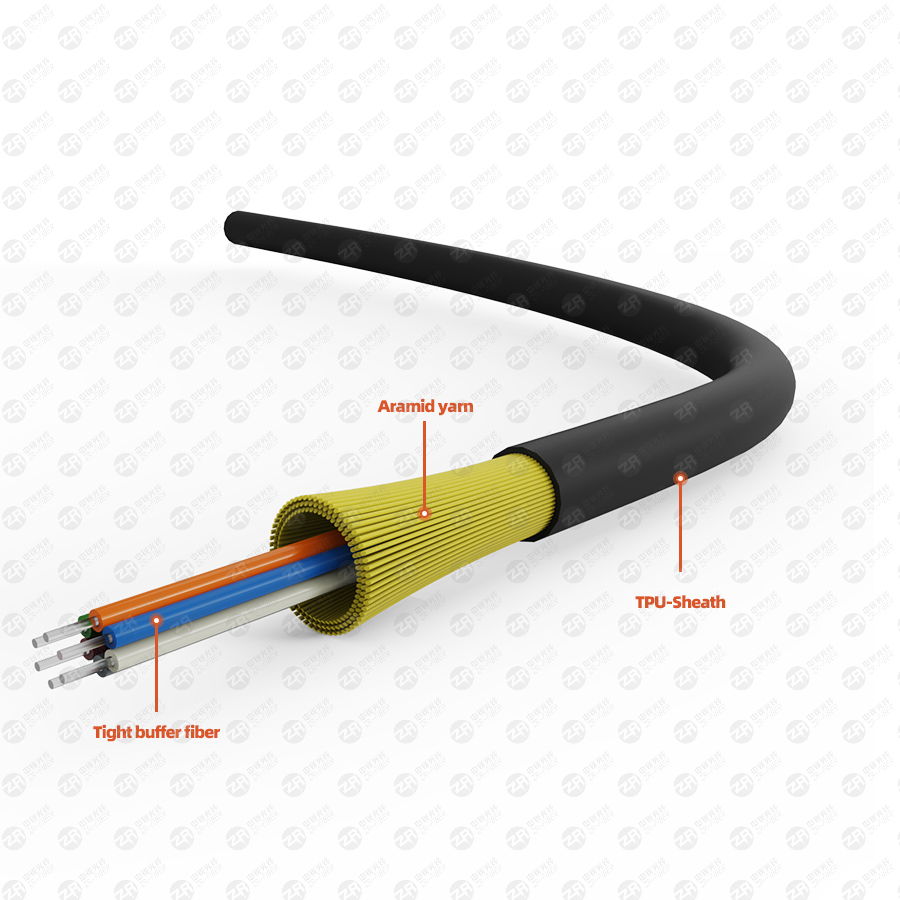Characteristics of non-metallic optical cable reinforcement cores
The reinforced core of FRP optical cable is a product that is hardened and extruded at a specific temperature based on glass fiber reinforced materials and resin systems. The glass fiber roll is the supporting frame of the fiber reinforced core that basically determines the mechanical properties of the fiber optic cable reinforced core.
The added material is able to fully exploit its mechanical properties as the resin matrix in the composite is filled with reinforcements and integrated with the whole, which acts to transmit the load to balance it. The resin matrix determines the thermal, chemical, weathering, electrical insulating and electromagnetic properties of the composite.
Analysis of bad connection of non-metallic optical cable connection method
Compared with steel wire materials, FRP core materials have the advantages of light weight, high strength, excellent corrosion resistance, excellent electrical insulation properties, low thermal conductivity, excellent thermal properties, excellent design and excellent craftsmanship. The product has excellent perfection, simple engineering, single molding and significant economic benefits. Performance comparison table of phosphate treated steel wire and FRP fiber reinforced core
Analysis of damage to the core connection part of reinforced non-metallic optical cable
The reinforcing core of the non-metallic optical fiber cable is fixed by bolt compression, however, depending on the mechanical properties of the reinforcing core of the FRP and improper installation of the anchor, the possibility of damage and falling off at the crimping portion becomes high.

Technical standards YD/T 901-2009 "Layer-to-wire communication optical cable" and YD/T 1181.3-2011 "Non-metallic optical cable reinforcement characteristics" stipulate the tensile strength and youth rate of the optical cable reinforcement core, however, the fiber does not need to be strengthened Shear strength of the cable core. FRP is an anisotropic material with low transverse shear strength. The transverse shear strength of glass fiber reinforced composites is only 24.5MPa. The transverse shear strength of carbon fiber reinforced composites is 71MPa, so FRP materials must avoid transverse shear.
The fiber optic cable reinforced core has sufficient shear strength.
The 24-core non-metallic fiber optic cable has a reinforced core diameter of 2.6 mm. If M4 bolts are used for compression, since it is difficult to calculate the contact area between the bolts and the reinforcement core, 1/2 of the grid area of Figure 2, which is about 4.81 mm2, is used as an assumed value. According to the shear strength of FRP 24.5Mpa, the maximum allowable compressive strength is 117.7N, and the friction coefficient of FRP and steel is 0.3. The maximum tension f=2×117.7×0.3=70.6N, which is far less than the acceptable relay 800N optical cable connection box. The core material is reinforced by phosphate-treated steel wire of the same diameter, and the tensile force can reach 2 114.2N. In addition to low shear strength, it is also determined by the non-metallic fiber reinforced core material with stress relieving and creep ability.
Now, there are no bins for non-metallic fiber optic cables. The general optical cable price box at home and abroad is dedicated to metal reinforced core optical cable, but when using non-metallic optical cable connection, the optical fiber cable is prone to cracks, slack and disconnection.
During work, the end reinforcement core of the non-metallic optical fiber cable does not need stress. However, due to the external force, the outer packaging of the optical fiber cable is lifted from the mountain, and the optical cable enters the water and the fiber core is damaged. Development of non-metal reinforced core metal The end anchor point construction method of reinforcing the FRP core with the screw punching method cannot meet the engineering requirements, so it is necessary to find a new anchor point construction method and develop an RFP reinforced core that can securely fasten the reinforcement core. Too nervous. To meet the needs of the project, please clamp it in the connection box.